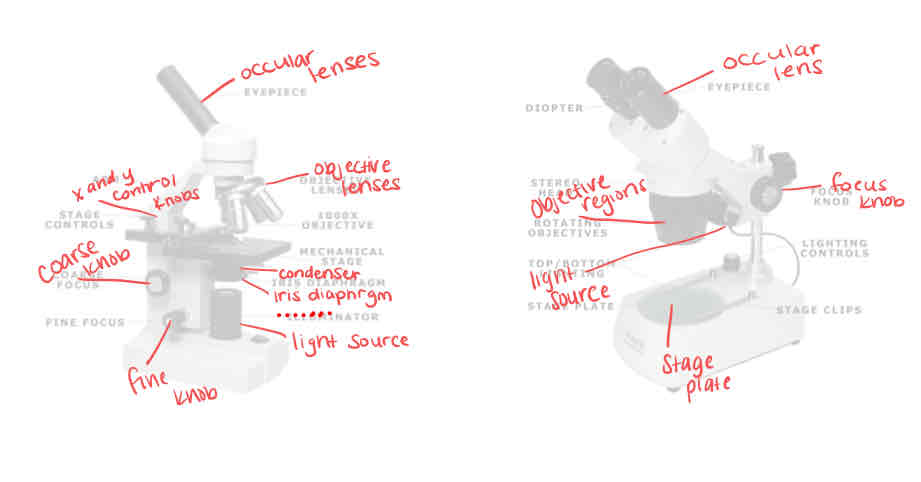Lab 2: Microscopy and Hemacytometer Cell Count
1/13
There's no tags or description
Looks like no tags are added yet.
Name | Mastery | Learn | Test | Matching | Spaced |
|---|
No study sessions yet.
14 Terms
Each living cell is bound by
plasma membrane
The cells of plants, fungi, and bacteria have an additional _______ surrounding the plasma membrane
cell wall
The eukaryotic cell contains several subcellular structures called ______, each one performing a specific task to maintain the structure and upkeep of the cell
organelles
Compound microscope make use of two glass lenses, __________ lenses
objective and ocular
The ________ lens forms a magnified intermediate image of the specimen in the tube, this image is illuminated from below the lamp. The image is further magnified by the _______ lens.
Objective, Ocular
The total magnification perceived is
the product of the magnifications of the objective and ocular lens
The resolution of a microscope is
he smallest separation between two viewed elements that allows the image to still be seen as two separate elements
What are the two different techniques you will use to view microorganisms?
Wet mount technique and Staining Techniques
Wet Mount Technique
Allows you to see organism’s true color and shape. Organism can also be difficult to see due to movement or translucency
Staining Techniques
Using one dye and staining everything the color of the dye. Can be used to see the organism and visuals differences between organisms. Unfortunately, the organisms are killed by the staining process and the staining masks an organism’s true colors and shape. It also takes more time and supplies
Microscope Parts

Hemocytometer
Thick glass microscope slide traditionally used to count the number of cells in a given volume of liquid
Number of cells per cubic millimeter
n = per square millimeter x dilution (if used) X 10
Number of cells per milliliter
n = cells counted per square millimeter X dilution X 10,000